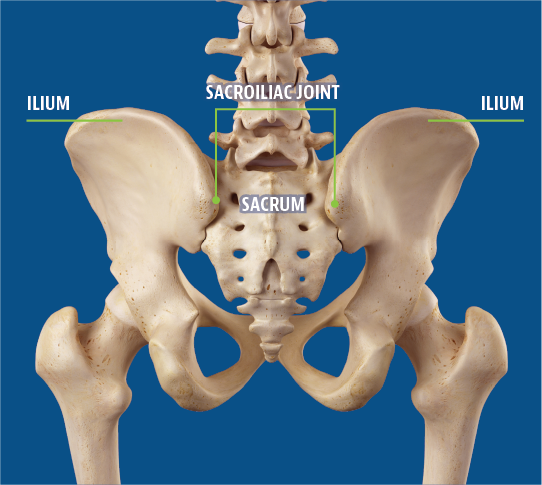SIT Procedure
Download the SIT Procedure brochure
The SIT procedure allows your doctor to stabilize your SI joint from a simple and safe posterior approach by inserting strategically-designed implants directly into the joint. The procedure is done through a small incision and typically takes less than one hour. Patient testimonials have demonstrated that treatment with the SsiF system improved pain, patient function, and quality of life.
Do You Have SI Joint Dysfunction?
If you experience one or more of the symptoms listed below, it may be a sign of SI joint dysfunction:
-
Lower back pain
-
Sciatic-like pain in buttocks or down back of leg
-
Hip/pelvis/groin pain
-
Stiffness and reduced range of motion
-
Pain climbing stairs, running, or jogging
-
Pain lying on one side
-
Leg instability, numbness, or weakness
-
Disturbed sitting patterns
-
Pain moving from sitting to standing
-
Disturbed sleep patterns due to pain
Making a Diagnosis
A variety of tests performed during physical examination, including: FABER test, sacral thrust test, distraction test, and palpation test all may help determine whether the SI joint is a source of your symptoms. Additionally, X-ray, CT and/or MRI may be helpful in the diagnosis of SI joint-related problems.
The most reliable method to accurately determine whether the SI joint is the cause of your pain is to inject the SI joint with a local anesthetic. The injection will be delivered under fluoroscopic or CT guidance to verify accurate placement of the needle in the SI joint. If your symptoms are decreased by at least 75%, the SI joint may either be the source, or major contributor, to your lower back pain.
SI Joint Dysfunction
There are several factors that can predispose someone to SI joint pain, most of which include forces that place a significant amount of stress to the joint. These include disruption of the lining of the joint, ligament injury, arthritis, spondyloarthropathy, trauma, infection, cystic disease, pregnancy, obesity, spinal deformities, previous spinal surgery, etc.
Treatment Options
Treatments for SI joint dysfunction typically focus on alleviating pain and restoring normal motion in the joint. Most cases are effectively managed using non-surgical treatments, including:
-
Brief rest period of 1-2 days
-
Applying ice or heat
-
Pain medication
-
Physical therapy
-
Supports or braces
-
SI Joint injections
-
Radiofrequency ablation
Surgery should only be considered if all non-surgical treatment options have been tried and do not provide relief. If surgery is needed, SI joint stabilization procedure can be performed to relieve your pain.
About Your SI Joint

The SI joints are located between the iliac bones and the sacrum, connecting the spine to the hips. The two joints provide support and stability, and play a major role in absorbing impact when walking and lifting. Strong ligaments and muscles support the SI joints. There is a very small amount of motion in the joint for normal body flexibility.
As we age, our bones become arthritic, ligaments stiffen, cartilage wears down, and bones may rub together causing pain. In addition to age, SI joint pain can occur as the result of a fall, work injury, car accident, pregnancy and childbirth, or as a result of hip or spine surgery. Further, scientific data shows pain from the SI joint can feel like disc or lower back pain. For this reason, SI joint disorders should always be considered in lower back pain diagnosis.
Consult your doctor to help distinguish if pain is from spinal disorders or SI joint dysfunction.

